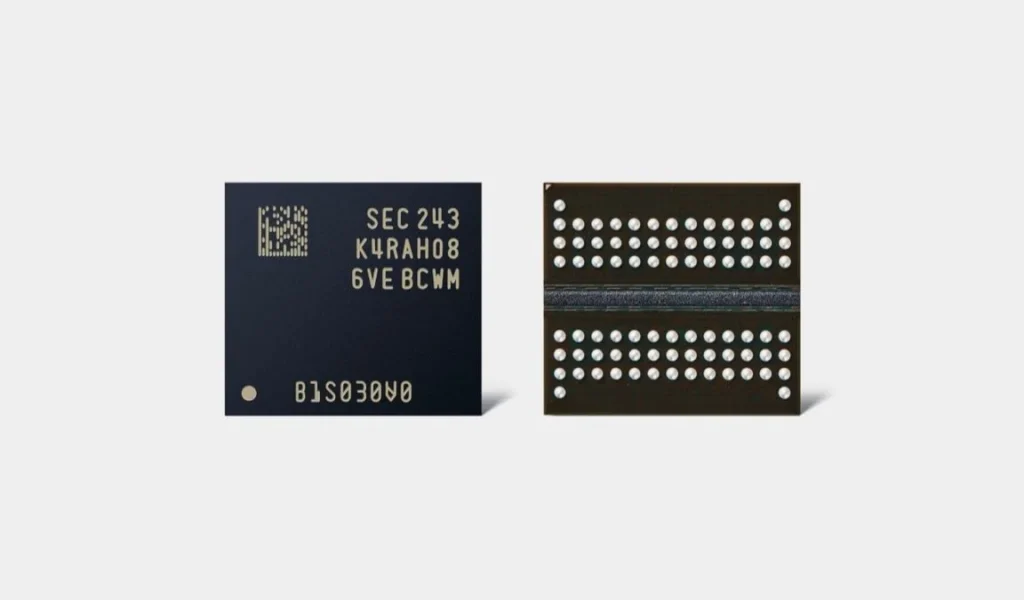According to Global SMT, Samsung announced the world’s first DDR5 DRAM chips manufactured using 12nm semiconductor manufacturing technology. The company unveiled its 16Gb DDR5 DRAM chips and said they have already been evaluated for compatibility with AMD’s Zen processors.
The new chips are more efficient and offer 23% better performance than previous-generation DRAM chips. The South Korean company said it made this technological leap possible by using high-κ material, which increases cell capacitance. Samsung also used its own technology to improve critical circuits.
The company’s new DDR5 DRAM chips use advanced multi-layer lithography to achieve the industry’s highest die density and offer 20% higher wafer productivity. These chips are capable of transfer rates of up to 7.2 Gbps, which is equivalent to processing two 30GB 4K movies in one second.
Samsung will begin mass production of its 12nm class DDR5 DRAM chips in early 2023. Products based on these DRAM chips can be expected sometime in the last quarter of 2023.
DDR5
DDR5 (Double Data Rate 5) is a type of computer memory that is used in computers, servers, and other devices that require high-speed data transfer. It is the successor to DDR4 and offers improved performance and higher density compared to its predecessor.
The size of the technology used to manufacture a memory chip, such as DDR5, is typically measured in nanometers (nm). A smaller technology size generally allows for higher density and better performance, as it allows more transistors to be packed into a smaller area.
As of 2021, DDR5 memory chips are generally manufactured using technology sizes of 10nm or 12nm. Using a 12nm technology size allows for a higher density of transistors on the chip, which can lead to improved performance and power efficiency.
It is worth noting that technology sizes are constantly improving, and memory manufacturers are continually working on new technologies and processes to further improve the performance and density of their products.
Read Global SMT Article